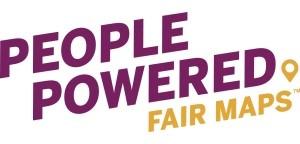A 50 State Strategy: Get Involved
Through the People Powered Fair Maps™ campaign, the League of Women Voters is pursuing every opportunity to end gerrymandering, create fair maps, and ensure that communities are represented in all 50 states and Washington, DC. There will continue to be opposition, challenges, and unexpected events, but nothing can stop a movement of people working to ensure that every person and every community counts.
In 2018, the U.S. Supreme Court decided that partisan gerrymandering was not an issue the Supreme Court could address. The League of Women Voters US leaders were so appalled that they quickly agreed to set up a two-year, two-million-dollar 50-state plus DC campaign to engage Americans in a “People-Powered Fair Maps” initiative. The League of Women of Delaware (LWVDE) is part of that campaign and we are seeking to build a coalition of community organization partners to work with us on a Fair Maps process.
- Building a collaborative that represents a broad coalition of community partners interested in working with us to ensure that Delaware’s redistricting process is transparent and fair.
- Developing and conducting several sessions to produce “Delaware’s Nonpartisan Criteria for Fair Maps," including the identification of “communities of interest” while building our mapping skills with practice maps.
- Engaging in legal action as necessary to ensure that whatever maps are adopted within the state is fair and appropriately represent communities identified during our work.
- a major public education program hosting and participating in events, forums, rallies, and tabling opportunities to engage the public in redistricting;
- training volunteers to make presentations to civic and other interested organizations;
- meeting with key stakeholders (community leaders, lawmakers, committee staff, etc.);
- engaging with the media and promoting social media attention to the significance of the redistricting process;
- monitoring legislative developments; working with legislators who share our goals for fair maps.
Learn about Fair Maps
(Click on headings to read more)
10 Things You Should Know About Redistricting
Every 10 years, after the collection of the decennial census data, states redraw their state and congressional district lines. These districts determine how communities are represented at the local, state, and federal levels. The redistricting process is fundamental in influencing how our government works for us.
League Urges U.S. Senate to Extend Census Reporting Deadlines
Expanding Voter Access
We fight to increase voters’ access to the polls, including expanding early voting, automatic and online voter registration.
Want to draw your Community Map?
Use these free tools and share them with FairMapsDE [at] gmail.com (us).
- Daves Redistricting Maps
DRA 2020 is a free web app you can use to create, view, analyze, and share redistricting maps for any state. DRA 2020 includes demographic data from the 2010 Census and 2018 5-Year ACS Estimates and election data for every state. Official congressional and legislative district maps are included and can be used as a starting point for a new map, or you can create one from scratch. A rich feature set makes it easy to create and modify maps while keeping them within the accepted parameters. DRA 2020 also includes a rich set of analytics, including measures of competitiveness, proportionality, minority rights, compactness, and splitting, as well as bias and responsiveness.
